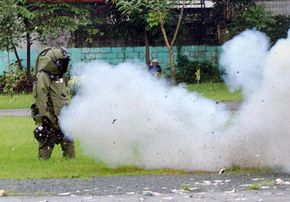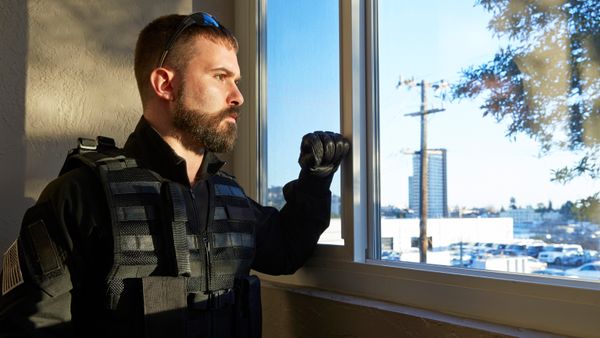At this very instant, these three scenarios may be unfolding:
- A suspicious package is discovered outside a federal building
- An Improvised Explosive Device (IED) is being planted alongside a road in Iraq or Afghanistan
- An English farmer is about to accidentally unearth an exploded shell from World War II
When bombs, unexploded ordnance (military equipment that includes artillery, cannons and other equipment) or threatening devices are found, they must be neutralized, disarmed, moved or exploded in a safe and controlled manner.
Advertisement
Robots can sometimes be used for these tasks, but all too often the job calls for the expertise, bravery and rock-steady hands of an explosive ordnance disposal (EOD) technician. The term "EOD" is most often used by the military; civilian and law enforcement agencies refer to these devices as unexploded ordnances, or UXO.
Most people dress for work in some combination of cotton and khaki, but an EOD technician wears anything from ceramic plates to Kevlar, the material used in bulletproof vests. Various manufacturers create many different types and designs of bomb suits and other blast-resistant clothing. However, all of them share common components, such as body armor and helmets.
While your typical bomb suit is too bulky, hot and expensive for even the most over-cautious civilian to wear on a trip to the grocery store, blast-resistant clothing is constantly evolving to fit the needs of the people that wear it. There are three main groups of people whose lives depend on blast-resistant clothing:
- Military
- Civilian/law enforcement
- Humanitarians working in war zones
Soon, this clothing may incorporate anything from nanotubes to special materials that thicken as they're stretched out. But before we get much further into our discussion of what blast-resistant clothing is made of and how it protects, let's take a look at the bombs it protects against.
What happens when bombs explode? How can they injure and hurt us? And how does blast-resistant clothing anticipate and protect against these injuries? Find out in the next section.

